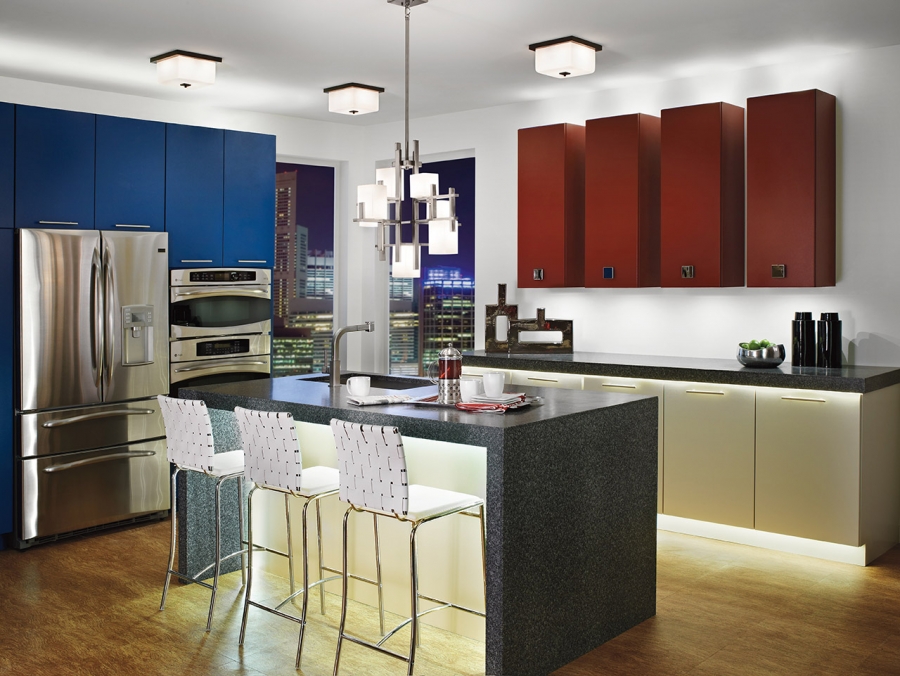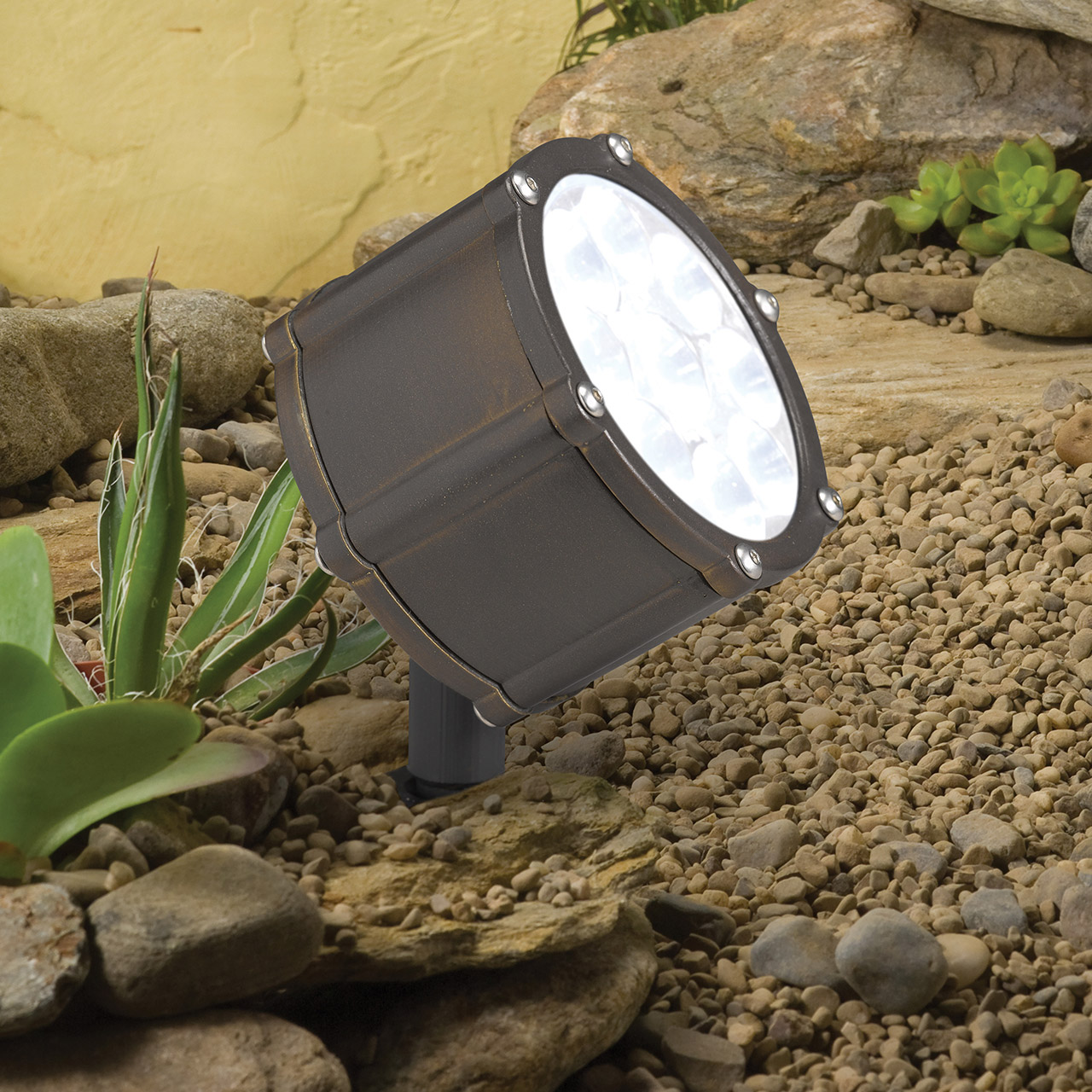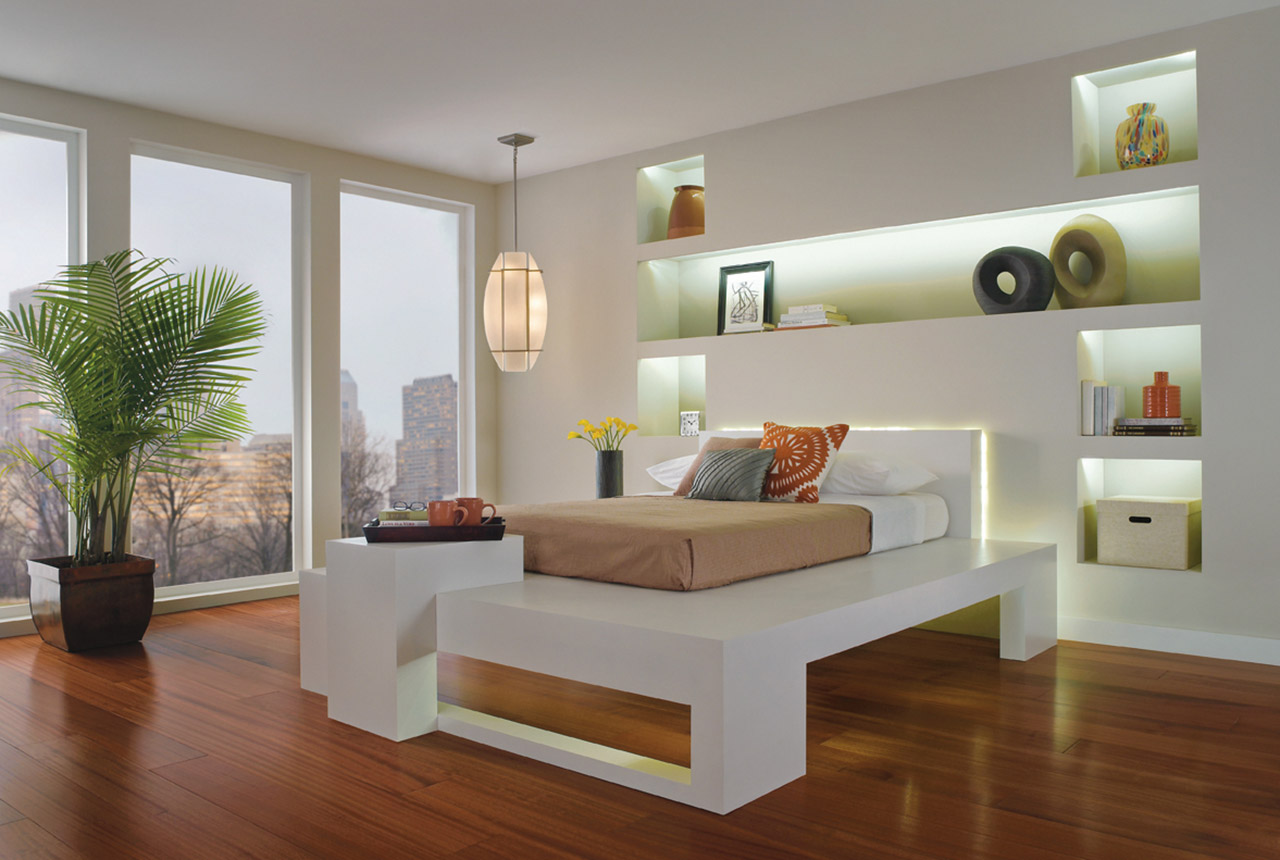Intro to LED Lighting
LED lighting is an energy- and cost-efficient option that allows for more creative applications than traditional lighting.
 Image courtesy of Kitchler
Image courtesy of Kitchler
As the cost of all energy continues to rise, Americans have been forced to choose alternatives. Over the years, we have selected more fuel-efficient automobiles and purchased energy-efficient appliances while adding insulation to our homes in an effort to reduce the amount of energy consumed. It is now time to seriously consider more efficient lighting.
Lighting represents 15.5% of a typical American electric bill, and that percentage has been rising since 2001 because other electricity-consuming products have become more efficient. The percentages representing our monthly expenditures for hot water, cleaning appliances, temperature conditioning, and refrigeration are going down, while the percentage representing our monthly expenditure for lighting is going up. All this will change as Light-Emitting Diodes (LEDs) begin to take hold of mainstream illumination.
LEDs are nothing new. The first experiments in electroluminescence were conducted over 100 years ago in 1907. It wasn’t until the 1960s, however, that those pioneering experiments resulted in visible light. In a few short years, visible red LED chips were put to practical use in early calculators and contemporary wristwatches. Red was followed by other colors, and in 2002 “white” light was finally replicated in an LED chip.

When the electrons inside the LED semiconductor change state, the diode transforms electric current into visible light. An assortment of phosphors and varying energy inside the chip control color. The efficiency by which electricity is translated into light is continually improving at a rate that can be likened to computer chip technology, far faster than any other type of light. LED illumination appears to be the answer to more efficient luminaires. In addition to their rapidly improving efficacy, LEDs are better for the planet in general. LEDs do not contain mercury, unlike fluorescent lamps, and they will also reduce the mass of used and unrecyclable incandescent light bulbs.
LEDs are not without their challenges, perhaps the largest being thermal maintenance. Temperature has a big effect on LED performance. Elevated temperature will impact lifespan and lumen output. It is incumbent on the manufacturer to control that heat.
Since the creation of “white” LED chips, lighting designers have been experimenting with their use. Refrigerator/freezer case lighting has always been a problematic application, because fluorescent lighting does not work well in the cold. That is just the opposite for LEDs, and so the industry is experiencing a revolution.
Because LED is directional, recessed cans are also excellent outlets for LED.
The LED’s compact size lends it to fit in small places, so cabinet lighting has become a popular outlet. The same follows for cove lighting, tray ceiling lighting, toekick lighting, and an assortment of accent lighting used in confined locations.
Among all residential use applications of the LED today, it is probably best suited for landscape lighting. With proper engineering, light beam angles and lumen output can be precisely created. Those characteristics are crucial to good landscape lighting design. LEDs are long-lasting, so lighting high in a tree, under water in a pond, or in other difficult-to-reach locations can really benefit from the multi-year longevity of LEDs. Landscape lighting should also be unobtrusive. Powerful light that can easily be placed behind a small plant or rock is exactly what’s needed.
As we all struggle to reduce our consumption of electricity, using LEDs can be part of the answer. Most LED lighting now consumes approximately 75% less power than conventional incandescent or halogen lighting, yet it still provides equal lumen output. Although the initial costs of LED products are higher, the total lifetime costs, including electricity and the lack of required replacement lamping, will be less. If maintenance costs are added, that return on investment (ROI) rises. Electric costs are also rising faster than the cost of living and current day inflation, which means that lighting is slowly evolving into a long-term investment, like a refrigerator or washing machine, and moving away from the low-cost, high-maintenance entity it is today.

Shopping for LEDs
Because LED products are available in a range of qualities and performance characteristics, you must choose carefully when selecting LED lighting to get the results you expect. Here are a few questions to ask a LED supplier. If the supplier gives vague or unsatisfactory answers, consider a different vendor or distributor.
-
What is the color temperature of the LED chip? Incandescent lighting ranges from 2,700 to 3,000 Kelvin (K), dependent on wattage consumed. Most homeowners are comfortable with this color, so it is wise to stay in this range. Commonly available temperatures (3,500 K––4,200 K) will appear too blue and may disconcert homeowners.
-
What is the color tolerance range of the LED? Grouping LEDs in a range that meets the same color tolerance criteria is called “binning.” Wide ranges in color tolerance can be objectionable (i.e., you may find yourself with an undesired variety of different colors of "white" light in your lighting installation). Look for color tolerances of approximately ±150 K.
-
What is the Color Rendering Index (CRI) of the LED? The color rendering index (CRI) measures how well a light source reproduces the true color (i.e., the color under natural light) of objects. A CRI of zero will make the area lit look like a set from a black and white TV show. A CRI of less than 70 will impart an ashen or gray pallor to various colors. Strive for a CRI score of 80 or better to really maximize intensity of color.
-
What is the lifespan of the LED? LED lifespan is measured differently than that of incandescent light. Calculations of incandescent and fluorescent lifespan are based on a 50% failure rate; that is, when 50% of the tested lamps fail, the promised life expectancy is established. LEDs do not suffer from catastrophic failure. From the moment an LED is turned on, it begins a slow deterioration. The promised life of an LED is based on a point when the LED lumen output has dropped by 30% (or to 70% of the original output). Most LED lighting is now has an expected longevity of approximately 40,000 hours. Once this question is answered, ask two follow-up questions.
-
If the LED is rated for 40,000 hours, does the rest of the system have the same rating? Are the driver, circuitry, wires, and fabrication materials also rated for 40,000 hours? Remember, this is the classic “weak link” situation. The portion of the system that breaks first dooms the entire system. Look for reputable lighting manufacturers who use high-quality LED chips. The combination of a strong component supplier and a strong fabricator will better assure a reliable lighting product.
-
At what ambient temperature was the 40,000 hours calculated? LED chips function best when kept cool. A lower ambient temperature will allow the chip to last longer. Be certain that the system has been tested to the right ambient temperature. If you are located in southwestern United States, which has higher nighttime temperatures, a typical testing ambient temperature of 25 degrees C (77 degrees F) will degrade the expected life of the LED used in outdoor lighting fixtures. Elevated ambient testing temperatures of 40 degrees C (104 degrees F) will ensure adequate life expectancies, even in desert climates.
-
-
How has the LED light been optically controlled? Good optics will maximize the lumen output and keep the operating cost lower.

LED lighting is an exciting alternative that maximizes electricity and increases the creativity of light use. It will require some adjustments to what we now consider “normal,” but the new normal will be an exciting visual tool sure to alter the way we use light in residential design.


Jeffrey R. Dross
Jeffrey is currently the corporate director of education and industry trends for Kichler. Over his career, he has been involved in almost every facet of the lighting business. He understands that the face of residential lighting is ever changing and has been involved in a number of industry roundtables working to plan for the future.
Website: www.kichler.com/







